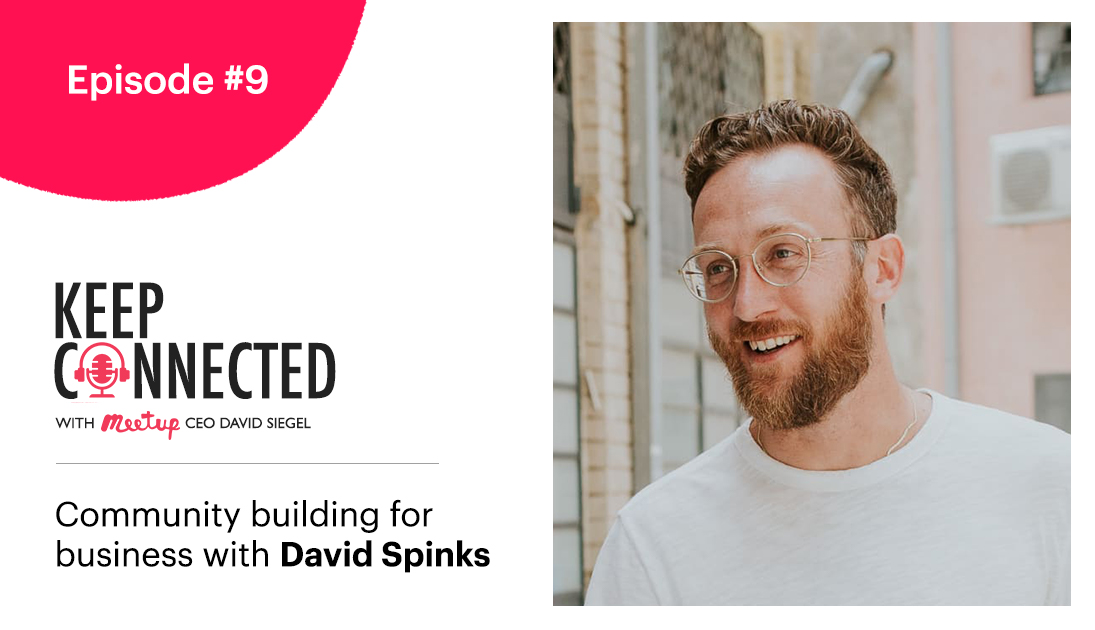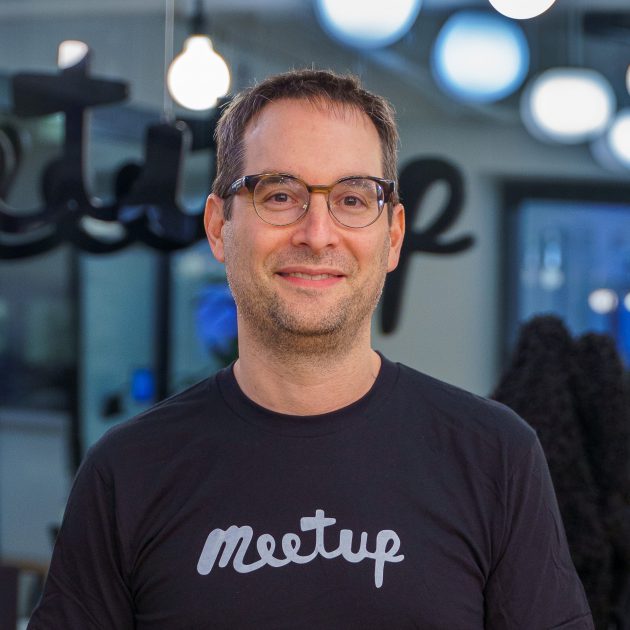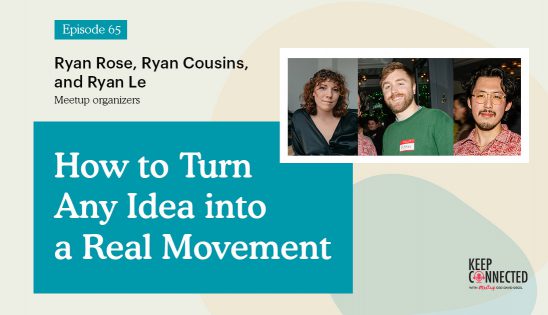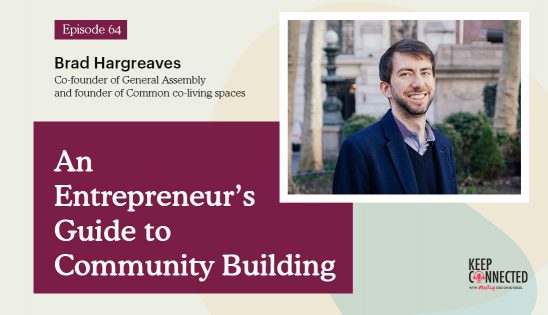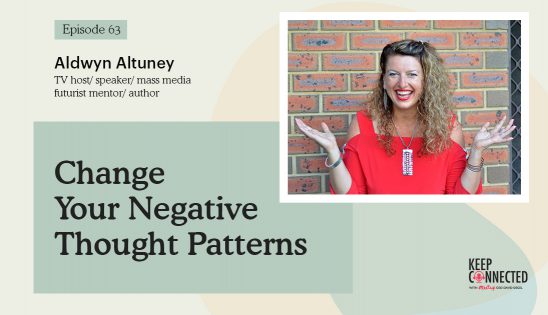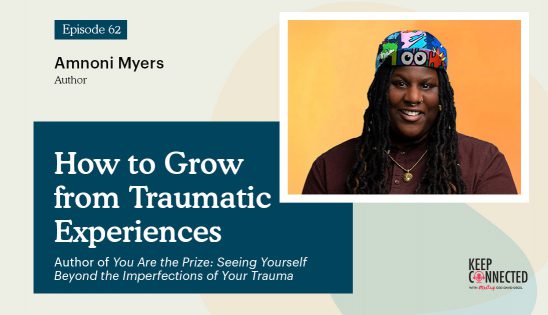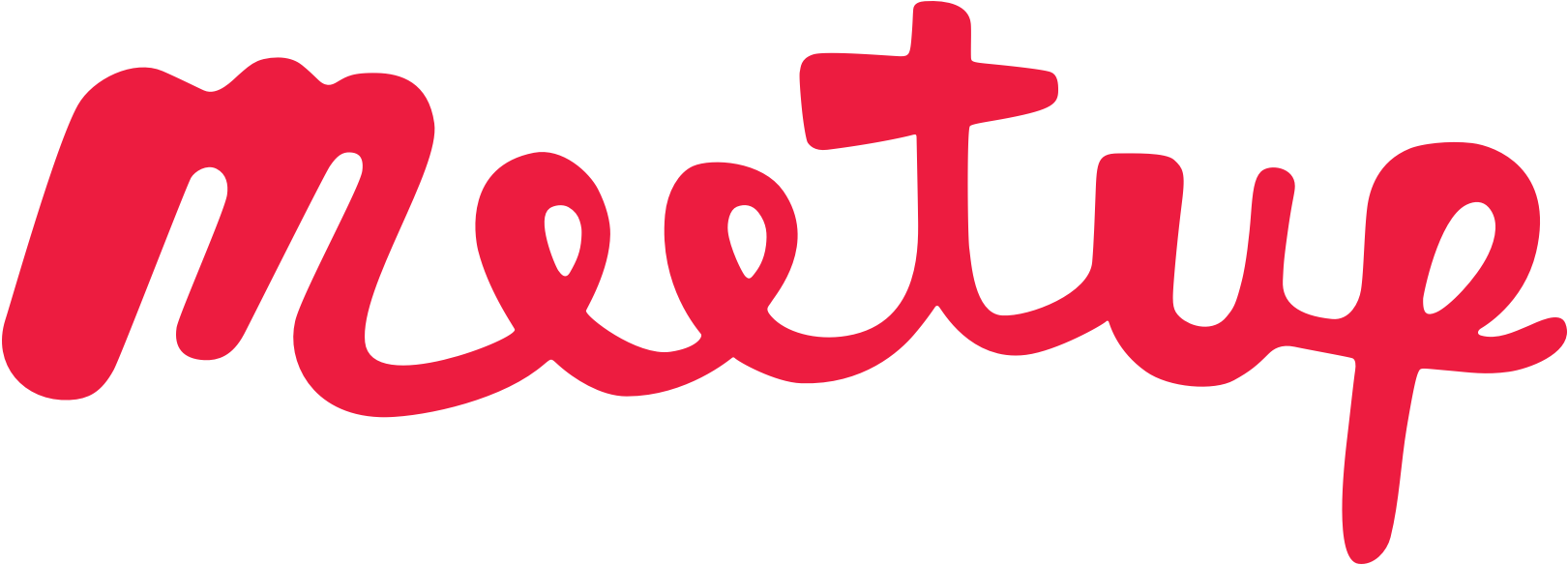Community has the power to change lives. It also has the power to change businesses. In this interview with David Spinks, a seasoned community manager, co-founder of CMX, and author of The Business of Belonging, you’ll hear why more and more companies are investing in community. David shares the seven Ps of community building and how to find community-market fit. By the end of the episode, you’ll know more about how to make community your business’s competitive advantage, no matter your industry.
Ranked as one of the top 25 CEO podcasts on Feedspot, Keep Connected with Meetup CEO David Siegel is a podcast about the power of community. For more details on other episodes, visit Keep Connected on the Meetup Community Matters blog.
We hope you’ll keep connected with us. Drop us a line at podcast@meetup.com. If you like the podcast, be sure to subscribe and leave us a rating on Apple Podcasts!
Learn more about Keep Connected host David Siegel’s experience as a leader and decision maker in his book, Decide & Conquer. Pre-order your copy today!
–
Community Building For Business: Show Notes
In this episode, we talked to David Spinks, the Founder of CMX. We talked about how a community is a moat. If you don’t know what a moat is, you’ll find out. How a community is a smart business and about the 7P’s of community. You’re going to learn a lot in this episode. I hope you enjoy it as much as I do.
—
David Spinks, welcome to the show. I’m glad to have you here.
I’m very happy to be here. Thanks for having me.
Let me introduce you. You’re the Founder of CMX, which is a 20,000 strong community dedicated to leaders of communities. You are like the cook for professional cooks. You are the leader of leaders. When anyone is a community expert, you are the expert for community experts. I’m particularly excited about it. Before we start getting into your background, speaking to a David, I have to ask you this question as a David myself, how do you feel about your name, David? Do you like it or not?
I like it. I didn’t use to like it when I was a kid. I thought it was too basic. No one calls me David. None of my friends call me David. Everyone calls me Spinks. My last name is more interesting than my first name. I’ve always been called Spinks in school and sports by friends. Even my sister calls me Spinksie. For some reason, the name stuck to my identity.
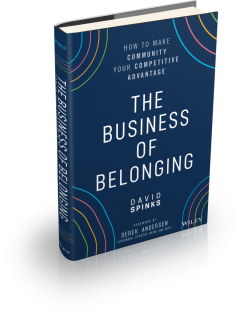
My goal for this show is by the end to start being at that level to be able to call you Spinks.
High aspirations for your show, but I think we can get there.
For me, when people say David Siegel in a crowded room, a high percentage of people ended up turning around. In my graduating class from the University of Pennsylvania, there were four David Siegels. I’m LinkedIn connected. Take ten different David Siegels. I’m not a huge David fan, but you could call me Siegel. I’ll call you Spinks, and we’ll go from there. You founded your first community at thirteen years old. I’ve got to hear about that. I would have my Bar Mitzvah then and you founded a community.
I also had my Bar Mitzvah then, but that wasn’t the community I started. If I had control over my Bar Mitzvah, it would have been a much better community event. Unfortunately, it was the standard Bar Mitzvah. I was a kid growing up in Long Island in New York. I largely struggled to fit in socially and had a bunch of social struggles. I found myself isolated from friends at various points in my middle school career. I was also an avid gamer. I became obsessed with Tony Hawk’s Pro Skater 4. I would run home and play for six hours every day. I became one of the top players in the world.
People and purpose are the two things that will make or break a community.
Did you also skateboard yourself?
I was not good at actual skateboarding. My hometown in New York was a surf town. Everyone surfed, everyone skated. I like longboarding, but actual like trick skateboarding, I was never good at it, but in Tony Hawk’s Pro Skater, the video game, I would crush everyone. I played that a lot and ended up starting a clan. On video games, you start clans to battle other clans. We became the best clan in the game. We launched our forums and website. It became one of the most popular online communities for Tony Hawk’s Pro Skater 4 at that time. I started it with my two clan cofounders. One of them happens to be a web developer. He built the website. I did a lot of the community management. I was thirteen. I didn’t know what that meant, but I was creating moderation standards, rules, guidelines and managing the forums. We would host competitions and host events. All the things that community builders and managers do nowadays. I was doing that as a teenager for this video game.
By the time you were in college, you probably forgot more about community than most people even know?
That’s possible. It continued to be a thread throughout my whole life. I was an early adopter of every social platform I could find. I was active on IRC, mostly around video games in those days, but then, the DeadJournal, LiveJournal, Tumblr and MySpace is when that came out. My whole generation was early on Facebook. I was very early on Twitter and started using that a lot, and that ended up changing my whole career. It was in college where I started connecting the community to business because I was a Business Administration major. All the classes in my business administration, like the path, were all very traditional old-school marketing. None of it talked about technology and social media, and how online communities were changing, how customers were talking to each other and interacting with businesses. I ended up pitching the idea for the first-ever social media class to the business department. They said no, then I pitched it to the group.
“What is this social media thing? It’s never going to get big, anyway. Who needs a class on it?”
I pitch it to the Computer Science department. He said, “Yes, if you help me create the curriculum.” I helped build the curriculum for the first social media business course in the college. It continued to grow my interests. I started blogging about business and community, and that led to my first job as a community manager right out of college. I’ve been working as a community manager professionally for about eleven years.
Did you know back in college that you would be a community-focused person, possibly for the rest of your life?
No.
Do you believe that you will be now?
Yes, now I do.
How did you accept that?
I always wanted to be an entrepreneur. I wanted to be successful in business. I saw those two things as clashing because the community was still very much not a thing in the world of business and not understood, not invested in. It wasn’t a career path or a job, but there were a few communities for this kind of stuff, but it was very small and disparate. I didn’t speak to entrepreneurship, startups and the things I wanted to work in. People would say like, “David Spinks is a community guy.” I was like, “No. I’m not the community guy. I’m interested in it. I like it, but I’m an entrepreneur.” I started multiple startups. One in the blogger outreach space, then I started an online cooking school and went through a 500 startups accelerator program.
I did this startup route. I felt very much like I was swimming upstream. Anyone who’s built a business before knows the feeling of like you’re swinging, and you’re not getting anywhere. You’re spinning your wheels. It felt like that for 5 or 6 years, but the community thing continues to come up. I ended up cofounding TheCommunityManager.com as a place to start talking about community management, writing about it and bringing other people to write about it as well. It grew a little bit. My reputation kept going in that direction, whether or not I wanted it to.
We had an idea to run a conference for community professionals for a few years. It was very intimidating to launch a conference. We didn’t do it, but I had pitched it to my friend, Max Altschuler. He ended up running a conference called Sales Hacker and that went well. He came to me and was like, “That conference CMX Summit you’ve been wanting to host, I know how to run a conference now. Let me run all the logistics, and you handle speakers and marketing. We’ll see if it works.” I was like, “Great. Those are the things that were intimidating to me around running a conference. Let’s try it.”
All communities have a purpose.
We put it together in seven weeks from the point we shook hands to the actual conference being hosted, which is insane to think about now. We had 300 people come out from multiple countries around the world, and all of them were community managers or community professionals. It was the first highly produced conference that was 100% dedicated to community professionals. They were good events, conferences and meetups, but it’s a well-produced premiere stage conference. It was the first one like that. It clicked for me at that point.
What I love is how iterative that approach was. It’s not as though when you were in college, you said, “I’m going to start building the biggest conference system out there.” It was first moved to newsletters, then moved to discussion forums, then start building community yourself. Little by little, you got to figure out the shape that you wanted to take and thrive. It’s a great example of entrepreneurship where you don’t necessarily know where you’re going to take it, but you know you need to keep learning and keep exposing yourself to new people and new ideas. A positive comes out of it. There’s a lot that we could learn from you. I read an article that you wrote around The 7Ps of Community. We both went to business school. I remember the 4Ps, which for some reason, it was price, power, promotion, and distribution, which is not a P, but we’ll let that pass.
They changed it to positioning.
I must’ve missed that, perhaps, maybe that’s the P. Please share with us. It doesn’t have to be all seven. It could be your top 4 or 5, but help us learn about the 7P’s of community.
The 4P’s of marketing mix inspired the idea of like, “What if we applied that to community and gave everyone a standard of what are the elements that go into a community program?” For some reason, there are a lot of good words that start with the letter P. It works out.
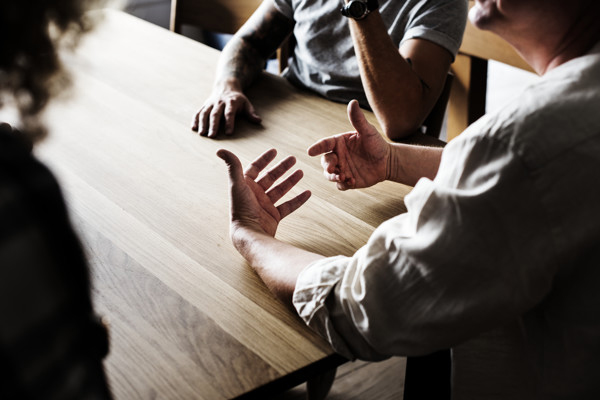
I thought it was a coincidence.
It was, and then I was like, “The letter P is magical for some reason.” The 7P’s are People, Purpose, Place where you gather, Policy like the rules and guidelines around how they gather, Participation, what they’re doing in that space, Promotion, how you’re growing it, and then Performance, what does success look like?
You passed the test. I thought you might only be able to get six of them.
I’ve said it enough times. I always forget the exact order because the order of it is a thing that I keep iterating on as well. You asked for my favorite ones. The order is interesting here because people and purpose are the two things that will make or break a community. All the other things, the place like the platform you use or where you host it, that doesn’t matter at the end of the day. It has to be driven by people and purpose. How people show up has to be driven by people and purpose. How you grow is driven by people and purpose.
Let’s double-click on each of those. What does people mean? What are you looking for? What’s the right mix of people, types of people, etc.?
In people, what we’re looking at is identity. It’s like, who is the identity that you’re trying to bring together. When we’re talking about community, we’re talking about social identity. What is the identity that we’re trying to bring people together around? What’s the shared identity that exists and what’s a shared identity that we’re trying to create? Max’s community with Sales Hacker, for example, there are sales professionals as an identity. He wanted to create the Sales Hacker identity. It’s a specific group within the larger group of salespeople that you can get more specific on because they don’t have a space to come together and support each other. It’s honing in on who you are serving. What is their problem? How does the community serve them, or how could it serve them? Understanding their pain points as deeply as possible, so you’re building a community for a very specific identity.
There’s a difference between interest and identity. What you’re saying is it has to truly be a social identity. If a community is formed around interests, “I’m interested in board games. I enjoy playing board games.” Can you be a real community if it’s around an interest or, in your mind, it’s always better to have it be identity-based? I believe there’s a difference between the two.
The interest is part of our identity. You reframe that phrase. “I have an interest in board games,” to “I am a person who has an interest in board games. I identify as a board game advocate player.” Let’s say board games, for example. Would a community for people who play board games be compelling? Maybe. It’s a broad interest. The key is to get more and more specific until that identity becomes apparent.
You move from this broad interest into, “There’s an actual identity here that people don’t have a social space to interact around. That’s an opportunity.” You get more specific on like, “What is the board game?” You can make people who love board games but who are parents and find board games that are good to include their kids in. It could be people who play board games who live in Austin, Texas. There are all these different elements you can make to make it more specific until it’s like, “That’s an identity that’s compelling.”
We have found at Meetup, and I’m sure you find the same thing, that it’s not about necessarily the size of a community. It’s about the sense of belonging and how close the fabric is of people to each other. In fact, large communities could, in many ways, be less impactful than much smaller, more niche communities, which speaks to exactly what you said, which is the closer identities happen, the more specific a community is. Feel free to disagree with that.
I’m publishing this book in March 2021. I did research into this exact topic. I found that both can be true. It’s not about the size. The size has to be aligned with the purpose. You have to find the group that feels isolated right now and doesn’t have a space to gather. There are tons of examples of getting more specific, being how you can find community market fit is what we’re looking for, but sometimes, going broader is the solution. Here’s an example. There’s an amazing community called Tech Ladies, started by Allison Esposito.
She was a woman working in tech. She wanted a community for women working in tech, but all the communities that existed for women in tech were very engineer-focused. It’s specific on women who are engineers working in tech. She couldn’t find a community that existed for women who are working in a marketing role in tech, in support in tech, operations in tech, or all these other roles that didn’t quite identify with engineers. She launched Tech Ladies to create a broader identity for women who work in tech, regardless of what their specific role is. That’s a good example. We’re expanding that circle a bit is what tapped into an untapped need that people had for the community.
You’re modest about the book. I do want to want to give you credit for it. It’s amazing.
Thank you. I’m excited to get it out. I’ve been working on the book for many years. You can now order it anywhere, The Business of Belonging. It’s all about why businesses should invest in the community, how to measure the value of community as a business, and then going through specific templates and frameworks like the 7P’s, and there are lots more in there on how to execute and build a community program out.
Let me ask you another question about the 7P’s. Let’s talk about purpose because you said the purpose was the one right up there with people. Help our readers understand what does it mean to have a meaningful purpose and how do you know if you have that or not because some people could delude themselves into thinking, “We have a purpose,” but in reality, they don’t? What’s an example of maybe a non-purpose and a purpose to help people differentiate between the two?
All communities have a purpose. It’s whether or not they’re intentional about it or not. If you bring people together and you say like, “Talk amongst yourselves. Have fun,” then that’s not being intentional. A purpose might be to bring people together, but you’re missing an opportunity there. What’s important is to get clear on why you are bringing those people together. What is the pain point that you’re solving? What is the problem that you’re solving? That’s how you’re going to design the experience around those people to make sure that the community is compelling and the event you’re hosting or the space you’re organizing has a clear objective in mind.
How you grow your community depends on people and purpose.
Can a social community be a real community? Is that enough of a purpose?
What do you mean by social community?
It’s like, “Let’s get together and hang out.”
Even that, why are you hanging out? Who’s there and what brings them there? Is a bar a community? Not really. If you’re going to a bar, there are a lot of people socializing there, but it’s not a community. There’s no purpose. That’s a social space.
There could be a small group within a bar that might be a community, but the entire bar itself is not one.
The small groups are usually friend groups. A friend group is like, “I’m investing in my social relationships and the people that I care about. I’m spending time with them.” It could be people coming there after work. It’s like, “Our purpose is to get to know each other on a more personal level outside of the office because, in the office, we’re always talking about projects. I want to learn more about you. Let’s gather at a bar and have drinks.” It’s the purpose that’s going to define it. Another good example is a community called The Dinner Party. It is a community for people who are in their 20s, 30s, and 40s who have experienced a loss in their life of a loved one.
The founders started this community because when they went to support groups for people who lost loved ones, they found that most of the people in those groups were in much older generations. It’s more likely that you’re going to lose someone at a much older age than if you’re in your 20s and 30s when both of the founders lost a parent in their twenties. They’re looking for a space. They couldn’t find it so they launched The Dinner Party. The purpose became clear. It wasn’t like, “Let’s gather and talk.” It was like, “We’re doing this because we are at a specific point in our lives that we lost someone. That brings a unique set of challenges.” That purpose plays into everything that they design in a dinner party.

What they ended up designing is it’s a potluck dinner. Someone can host it. They have a clear tone of playfulness and fun at these things. Dark humor is very welcome, like joke around about death, joke around about these things that are taboo otherwise because this is a space where you’re normalizing that you’ve lost someone, and you’re accepted for that here. Other spaces might say, “Gather because you lost someone and talk amongst yourselves.” By getting specific about who’s in that room, how they’re interacting and why they’re there, they’re able to create a much more compelling community experience.
How discerning and thoughtful should community leaders be when it comes to thinking about who is in the room? I know the answer is, “It depends,” but do you have a general rubric or framework around the openness of the community? Should communities be open in general to everyone and should we lean ourselves towards not being discerning at all? Any perspective on that?
No, I don’t think you should be open to everyone. Communities, by definition, are intentional and specific about who they are focused on. You want to exclude with empathy and exclude with intention. Unhealthy exclusion is where people aren’t able to be in the room who should be there. That usually shows up in terms of unconscious bias, racism and sexism. That shows up in unconscious bias where, “I have a community for product managers, and women don’t feel safe and included here because we haven’t been intentional about explicitly including a group that the norm outside is for them to be excluded because of systemic sexism or something like that.”
A good question I always ask is, “Who should be in this room? Who isn’t in this room? What is a voice that should be in this room that isn’t in this room right now?” That said, it’s important to exclude with intention. If you’re open to everybody, then you’re not going to be able to create a safe space for the people that you are trying to create a new norm for and create space where they can be themselves without fear of judgment or being attacked. They can be truly open and transparent.
That’s helpful because many community leaders struggle mightily with this, myself included, in that it feels incredibly uncomfortable to me to “exclude” anyone, but it’s done the right way with empathy, respect, and thoughtfulness. It may be important in building the community that can engender safety like you had said specifically. Thank you for that thoughtful comment.
One tip there too when we design exercises with companies, a lot of times is we write down who’s our community focused on. Another thing is who’s our community not focused on. Being explicit about like, “This is not who we’re building for. We’ll help you articulate who you are building for.”
Whenever I’m doing strategic planning and prioritization exercise with our team in Meetup, I always talk about how deprioritization is far more important than prioritization. Anyone can come up with a list of 30 different things and say, “Look at all the priorities.” That’s not helpful. The real strategy is in what you’re deprioritizing and to be ruthlessly deprioritizing. There are some similarities between those two concepts. You talked about your advice to companies quite a bit, and we’d love to know a little bit about any advice that you have for businesses who are thinking of investing more in the community.
As you said, the community wasn’t as much of a thing in the past. We both believe that it’s going to be a much bigger thing in the future. I’ve said that many people have social media experts in their companies nowadays. Many people have community experts in their companies, but a few years from now, they’re going to be tens of thousands of companies, hundreds of thousand companies with a dedicated community expert. I believe that’s the future. Like many years ago, people didn’t have that.
It’s already happening.
What advice would you give for companies that are struggling with how to build community?
The era of community is today.
I wrote a book on it. Buy the book, step one. To clarify too, it is happening. We have the data to show that it’s happening and it’s growing. We published the Community Industry Report. You can download that on CMXHub.com. Seventy-nine percent in 2017 of companies investing in the community had a dedicated community manager. Now it’s 88%. Community team sizes are growing as well. We ask how many companies have a team of 1, 2 to 5, 6 to 9, 9 plus, and across the board, the bigger team sizes are growing.
Is that because people are able to measure the ROI somehow and see the value of community? I know that’s something that you spend a lot of time thinking about, which is measuring the value of community. Maybe talk a little bit about that.
Why is it happening? You and I have been banging this drum for a long time that this is what’s going to happen because companies have been moving in the direction of serving customers, customer service, customer success, empowering the customer, the voice of the customer. As customers have become more powerful in large part because of social media, companies have had to invest more in the customer, in the people that they’re serving, and community was the logical outcome of that. Now every company seems to be investing in the community. First Round Capital did their report in 2020. It was over 80% of startups investing community and 28% considered their literal moat and competitive advantage that’s critical to their success.
It’s here. The community era has arrived. If you are interested in building community, start learning. The first thing I’d say is this is a discipline. It’s a skillset. It’s not something you can hand off to an intern or to a junior person who’s never done it before. There are tools, systems. It’s a lot of work. It’s more than one person’s full-time job. There are a lot of people who have been doing this work well for a while now. Start by learning what’s working in this space and investing and building a proper team with actual experience to lead your program the same way you would for product, community, support, engineering. You would not hand any of those off to an intern, do not do that with the community. Make a real investment in it.
For those of you who don’t necessarily know the term moat, it was first popularized by Warren Buffett. It refers to around a castle. You’ll see in fairytales a moat around a castle. People can’t necessarily get into the castle because of the moat. It is something in business that is perceived as one of the most important ingredients to companies being able to succeed because it’s difficult for individuals to be able to copy a business with a strong moat. It’s one of my favorite business terms.
If you think about why is community a moat because no code is on the rise. Low code is on the rise. There are a million developer boot camps. Building a tech stack is no longer a real competitive advantage because anyone can build that same tech stack relatively easily, sometimes without even needing to know how to code now. What can’t they copy? There’s no hack around community. If you’re investing in a community, give it at least a twelve-month timeline before you start to see business results. The real value comes from these relationships that took time to build that get people bought into the identity that gets them to be an advocate. That’s something that no one can show up and copy. They’ll have to spend the same twelve months you did building relationships, helping people forming that network. That’s why it’s a moat. It’s hard to copy.
If you think about what used to be considered one of the most significant moats many years ago, which was social media. I have a significant social media following and it’s hard to build that. It’s not that hard to build that these days considering how many individuals and celebrities can build a following as quickly. The key is that community is building relationships between all those people. If you picture a fabric, and that community has in factorial numbers of relationships, not to get too geeky, if there are hundreds of people, we’re talking about tens of millions, if not billions of relationships between those people, that’s something that is incredibly difficult to copy and is a far greater moat than anything that social media could ever do.
Your point is well taken and a particularly good example of why community is on the rise. Before we go to our rapid-fire questions, is there anything that we didn’t hit on that would be helpful for our readers to know about? I could talk to you for days. I don’t know if you would want that, but I would love that around community. Is there anything that you’d want to share with our readers or with any Meetup organizers or the tens of thousands, hundreds of thousands of organizers reading this?
One lesson that I’ve had to relearn over and over again is to go back to your members. There’s a 99.9% chance that if you’re building community, you are not talking to your members as much as you should be. It’s the same advice that you hear in startups like, “Get out of the building. Talk to your customers.” It’s the same thing in community. It’s like all the challenges that you’re thinking about on how to engage your community or grow it, or make it better and make it more compelling. All of those answers live in a conversation that you can be having one-on-one with your community members. Talk to them.
I’m going to ask you a few questions. I want to know the first thing that comes to your mind. Are you ready for rapid-fire?
As ready as I’m going to be.
Favorite quote?
“The journey is the destination.”
I have a sign in my home that says that quote, which I bought all the way back when I was in college. I still have it here. Your first job?
I was a busboy. That was my first actual job that wasn’t babysitting or something nonsense. The actual paycheck was I was a busboy at a restaurant.
Favorite book growing up?
The Goosebumps series. I’m a Millennial. I must’ve been in elementary school, middle school time. Goosebumps were a collector’s item. It was like pugs or Beanie Babies. These books are called Goosebumps. It was like this long series. They’re all like scary stories. I don’t think anyone read them. We collected them. It was cool to own a lot of Goosebumps books.
Name something on your bucket list.
I would love to get a van or a bus, live in it, and travel the country for at least three months.
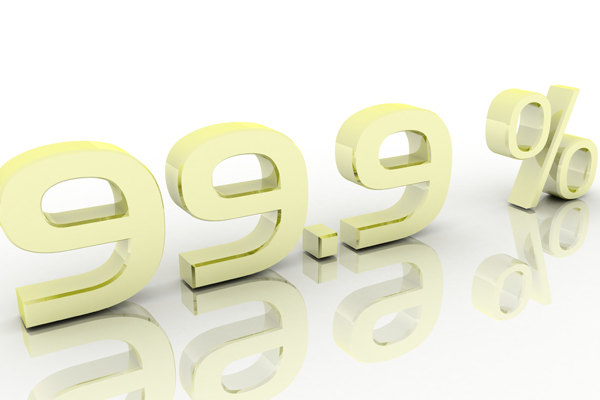
Where in the country are you going to go?
I probably hit up a lot of national parks. I’ve done a lot of traveling in my life. I traveled to a lot of countries. We’ve done a couple of road trips across the US. That was my favorite trip because you get to see many more missed little details about people and culture when you drive and can stop wherever you want.
I like the retro with a bus. Are you not looking for an RV with a couple of beds in it and a bathroom?
More than its size, every community must be aligned with its purpose.
The buses on TikTok, I’m like, “I don’t want any of those.”
Final question for you, what do you most want to be remembered by?
Personally, I’ll be remembered as a good friend, father, and family member who showed up when it mattered and when it counted. Professionally, my mission is to help a million-plus people learn how to build more meaningful communities. If I’m remembered for having genuinely helped people launch communities that changed other people’s lives and gave them a space that they needed to grow and heal, then I think I’ve done a good job.
Thank you for being a guest. I’m looking forward to sharing this with the world and influencing the millions that you will continue to influence.
Thanks for having me.
—
Thanks for reading. I took a lot of great takeaways. Number one is all around the importance of safety and belonging. Number two, around a focused community in terms of a purpose and how that will drive success. If you like this episode, then subscribe, give a review on Apple Podcasts. Remember, let’s keep connected because life is better together.
Important Links:
- CMX
- TheCommunityManager.com
- Max Altschuler
- The 7P’s of Community – Article on CMX
- Tech Ladies
- The Dinner Party
- Community Industry Report
- Apple Podcasts – Keep Connected with Meetup CEO David Siegel
- http://DavidSpinks.com/Book
About David Spinks
 Founder of CMX, a 20,000-member organization dedicated to helping community professionals thrive.
Founder of CMX, a 20,000-member organization dedicated to helping community professionals thrive.
David is also the VP of Community at Bevy, an enterprise software platform that powers event-driven community programs and virtual conferences, following its acquisition of CMX in 2019.
David has personally advised and trained hundreds of organizations in community strategy, including Facebook, Waze, Salesforce, Airbnb, and Google.
Mary Garcia (she/her) is Meetup’s Content Manager and editor of the Community Matters blog. When she’s not writing, Mary organizes a swamp fiction book club on Meetup. Find her on LinkedIn.
Last modified on December 13, 2021

